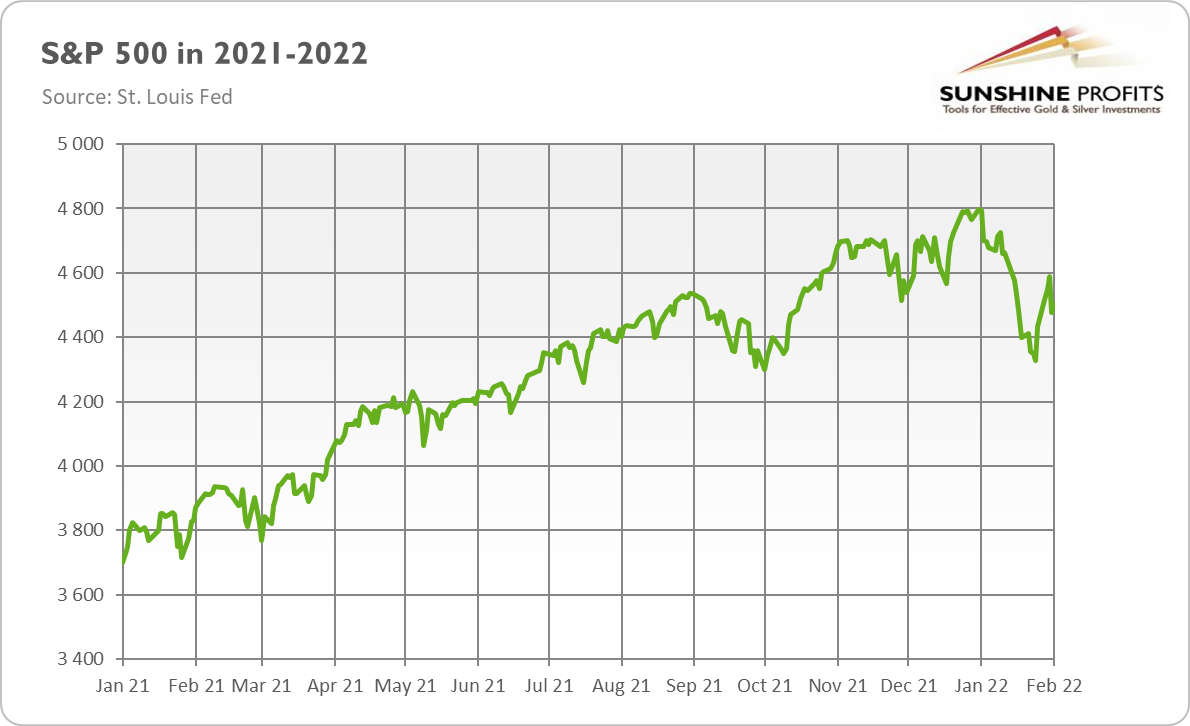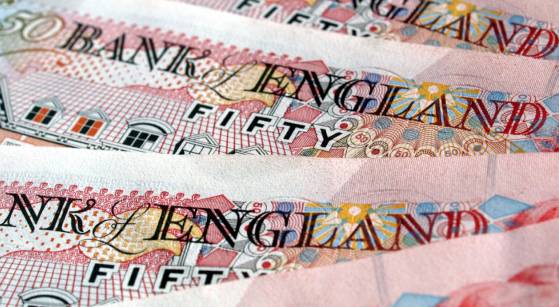The latest employment report strongly supports the Fed’s hawkish narrative. Surprisingly, gold has shown remarkable resilience against it so far.
What a surprise! The US labor market added 467,000 jobs last month. As the chart below shows, the number is below December’s figure (+510,000) but much above market expectations – MarketWatch’s analysts forecasted only 150,000 added jobs. Thus, the report reinforces the optimistic view of the US economy’s strength, especially given that the surprisingly good nonfarm payrolls came despite the disruption to consumer-facing businesses from the spread of the Omicron variant of the coronavirus.
The unemployment rate increased slightly from 3.9% in December to 4% in January, as the chart above shows. However, it was accompanied by a rise in both the labor force participation rate (from 61.9% to 62.2%) and the employment-population ratio (from 59.5% to 59.7%). Last but not least, average hourly earnings have jumped 5.7% over the last 12 months, as you can see in the next chart. It indicates that wage inflation has intensified recently, despite the surge in COVID-19 cases that was expected by some analysts to dent demand for workers.
Hence, the January employment report will cement the hawkish case for the Fed. Rising wages will add to the argument for decisive hiking of interest rates, while the surprisingly strong payrolls will strengthen the Fed’s confidence in the US economy.
Implications for Gold
What does the latest employment report imply for the gold market? The unexpectedly high payrolls should be negative for the yellow metal. However, while gold prices initially plunged below $1,800, they rebounded quickly, returning above its key level, as the chart below shows.
Gold’s resilience in the face of a strong jobs report is noteworthy and quite encouraging. After all, the report strengthened the US dollar and boosted market expectations of a 50-basis point hike in the federal funds rate in March (from 2.6% one month ago to more than 14% now). Such a big move is unlikely, but the point is that financial conditions are tightening without waiting for the Fed’s actual actions. In the past, gold disliked strong economic reports and rising bond yields and showed a negative correlation with nonfarm payrolls, but not this time. More generally, although long-term fundamentals have turned more bearish in recent months, gold has remained stuck at $1,800.
However, last week, two factors could have supported gold prices. The first was rising volatility in the equity market. The S&P 500 Index dropped almost 500 points, or 10%, in January, as the chart below shows. Although it has recovered somewhat, it still remains substantially below the top, with the tech sector experiencing weakness. On Thursday, the shares of Meta, Facebook’s parent company, plunged more than 20%.
The second potentially bullish driver was last Thursday’s meeting of the ECB’s Governing Council. The central bank of the Eurozone was more hawkish than expected. Christine Lagarde acknowledged inflationary risks and said that she had become more concerned with the recent surge in inflation. According to initial estimates, the annual inflation rate in the euro area amounted to 5.1% in January 2022, the highest since the common currency was created. Lagarde also backed off her previous guidance that the interest rate hike was “very unlikely” in 2022. The ECB’s pivot – the central bank opening the door for the first rate increase since 2011 – boosted the euro against the greenback.
The bottom line is that gold has made itself comfortable around $1,800 and simply doesn’t want – or is not ready – to go away in either direction, at least not yet. The battle between bulls and bears is still on. I’m afraid that, given the relatively aggressive monetary and financial tightening, the sellers will win this clash and gold will drop before the bulls can regain control over the market. However, recent gold’s resilience indicates that there is an underlying bid in the markets and bulls are not giving up.
If you enjoyed today’s free gold report, we invite you to check out our premium services. We provide much more detailed fundamental analyses of the gold market in our monthly Gold Market Overview reports and we provide daily Gold & Silver Trading Alerts with clear buy and sell signals. In order to enjoy our gold analyses in their full scope, we invite you to subscribe today. If you’re not ready to subscribe yet though and are not on our gold mailing list yet, we urge you to sign up. It’s free and if you don’t like it, you can easily unsubscribe. Sign up today!
Arkadiusz Sieron, PhD
Sunshine Profits: Effective Investment through Diligence & Care














![Warsaw Stock Exchange: Brand24 (B24) - 1Q23 financial results Turbulent Q2'23 Results for [Company Name]: Strong Exports Offset Domestic Challenges](/uploads/articles/2022-FXMAG-COM/GPWA/gpw-s-analytical-coverage-support-programme-wse-2-6311cd4191809-2022-09-02-11-30-41-63175bda84812-2022-09-06-16-40-26.png)









![Warsaw Stock Exchange: Brand24 (B24) - 1Q23 financial results Turbulent Q2'23 Results for [Company Name]: Strong Exports Offset Domestic Challenges](https://www.fxmag.com/media/cache/article_small_filter/uploads/articles/2022-FXMAG-COM/GPWA/gpw-s-analytical-coverage-support-programme-wse-2-6311cd4191809-2022-09-02-11-30-41-63175bda84812-2022-09-06-16-40-26.png)


